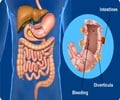Higher levels of blood markers in the umbilical cord indicate that the baby has more fat and may continue having more fat into late childhood and adolescence.

‘Higher levels of cord-blood leptin and adiponectin in the umbilical cord indicate that the baby has more fat and may continue having more fat into late childhood and adolescence.’





To examine the association of cord-blood leptin, adiponectin and birth weight with childhood and adolescent fat, Simpson and her colleagues measured blood taken from the umbilical cord at birth in 5,011 mothers and children who were part of an existing study in the United Kingdom. Higher levels of cord-blood leptin and adiponectin at birth were associated with greater fat in the child at ages 9 and 17, and these effects remained even after pregnancy and lifestyle influences such as the mother's weight in pregnancy were accounted for. Greater birth weight also corresponded to the child's increased fat mass at ages nine and 17.
The researchers found that cord-blood leptin was positively associated with fat mass, waist circumference and body mass index at age nine, but that the effect was diminished when they adjusted for pregnancy characteristics.
They found a similar but weaker pattern at age 17, when cord leptin was significantly associated with fat mass, waist circumference and body mass index, but these associations faded after they adjusted for maternal and pregnancy characteristics.
Cord-blood adiponectin was not associated with any measures at age nine, but at age 17, adiponectin was positively associated with fat mass and waist circumference. Also at age 17, the effect size after adjusting for maternal and pregnancy characteristics was strengthened.
Advertisement
Source-Newswise















